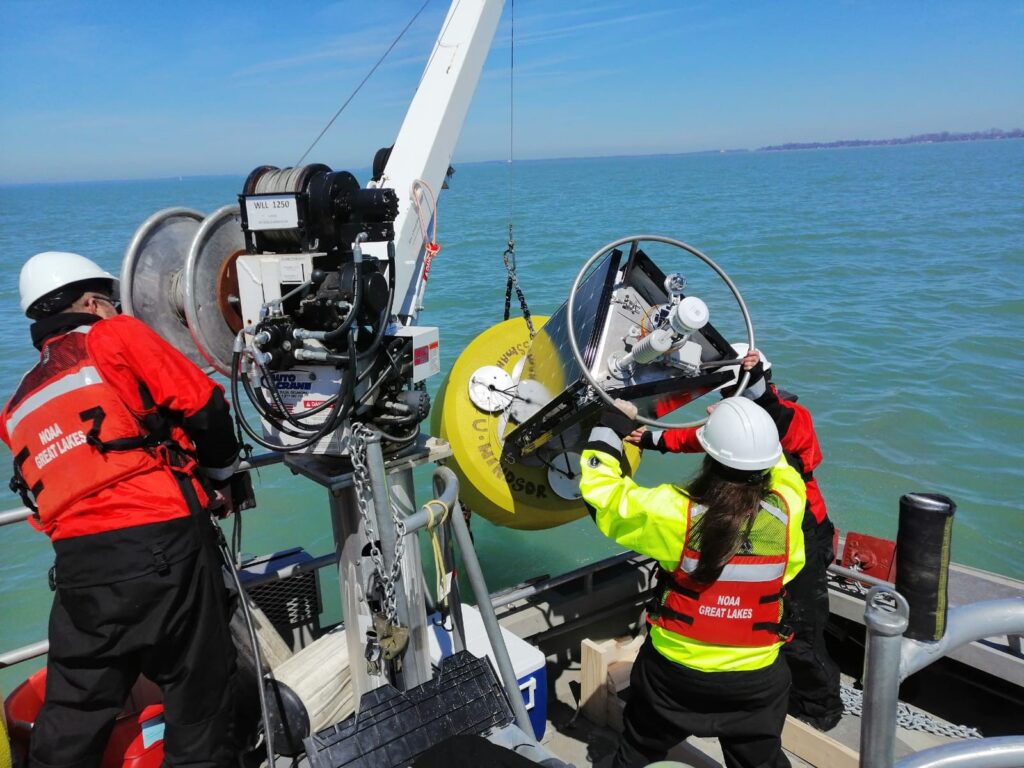Harmful algal blooms are a major concern in large waterbodies and have historically been linked with high phosphorus inputs. In Lake Erie, while extensive watershed management plans have successfully helped to reduce phosphorus loads received by the lake, HAB frequency has recently increased. Interacting biological, chemical and hydrological stressors, including flooding, water turbidity and temperature are thought to be involved. To assess their effects, the temporal and spatial resolution of environmental monitoring data must reflect the rate and scale at which processes occur; across terrestrial, riverine and shoreline interfaces.
Erie Watch aims to improve knowledge of threshold drivers of HABs through deploying mobile monitoring units around the watershed of Lake Erie. The units use real-time technology to monitor phosphorus (total and bioavailable P), and meteorological variables, in addition to nitrate, light intensity, chlorophyll-a, water temperature, water turbidity, and flow rate.
The database of high-resolution monitoring information generated will be made available to the public via GLOS.
For more information, please contact Dr. Jill Crossman [email protected]
http://www.uwindsor.ca/people/jhc/
https://twitter.com/ErieWatch

